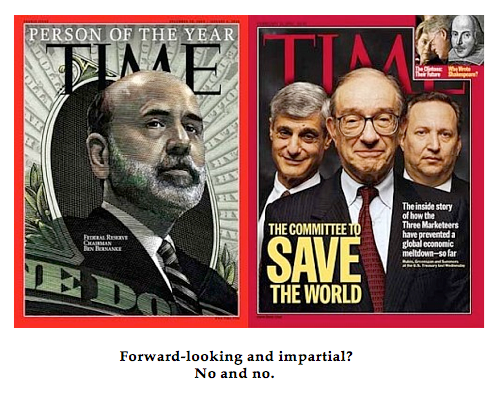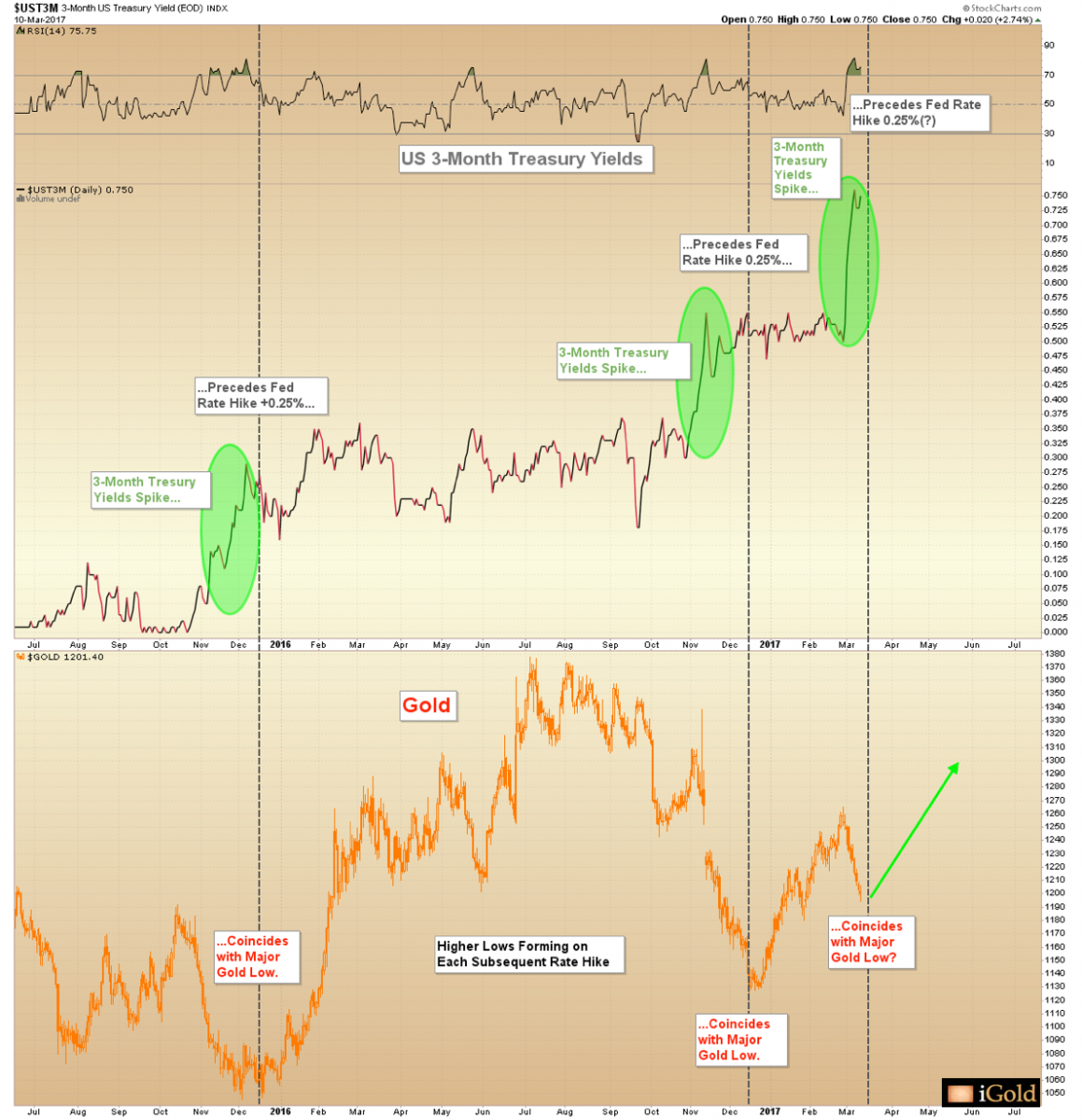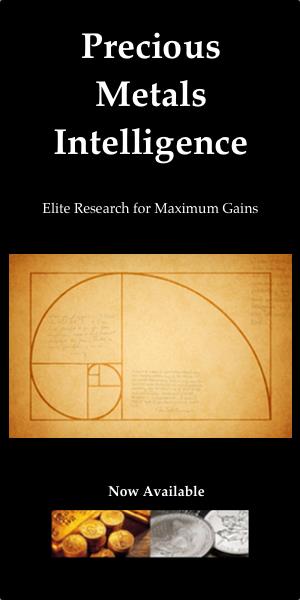Will A Fed Rate Hike Mark The Low For Gold Prices?
Three-month US Treasury Bills are now pricing in a hike for tomorrow’s interest rate decision by the US central bank. This leading indicator has been highly accurate since the first Federal Reserve Rate hike in December 2015. Below we show a two-part graph, with the 3-month Treasury yield on top, and the price of gold immediately below. Fed ¼ point rate hikes are highlighted by the black vertical lines:
Note that in both prior instances preceding quarter point rate hikes, three-month treasury yields spiked significantly above their prior trading ranges in the weeks before the increase (green highlights).
This is exactly the same signal that we have seen over the last two weeks in yields, shown by the far upper right highlight.
Rate Hikes Have Marked Gold Lows
Furthermore, each Fed Rate hike has thus far coincided with a major gold price low. Note that in December 2015, the rate hike announcement coincided with the absolute low of the 2011 to 2015 bear market in gold almost to the day, at $1045 per ounce. In December 2016, gold hit its low at $1,122 the day following the Fed rate hike, only to retest that low three trading days later and then advance over $130 during the next two months.
Will tomorrow’s pending quarter point rate hike coincide with yet another important major gold price low?
While it is dangerous to always expect patterns to repeat perfectly time and time again, clearly we are observing an important interrelationship here between these three markets:
(1) three-month US treasury yields as a leading indicator,
(2) the Fed Funds Rate moving higher second, and
(3) the gold price carving out an important low third.
Note that if this pending rate hike does coincide with a gold price low in the vicinity of $1200, we will have observed a series of three higher lows forming in gold amidst the first three interest-rate hikes of a decade. Higher lows at critical pivot points are the makings of a market that is attempting to establish a new rising trend.
The Fed As A Reactionary Institution
This brings us to another important point that we have been hinting at in the past: it is increasingly clear that the Federal Reserve is a reactionary institution, not a proactive one.
We can distinctly see that the Fed has been taking its cues from the US short-term treasury market, namely three-month and one-month Treasury bills. In essence, the Fed is behind the curve, raising interest rates by reacting to market conditions – as opposed to leading the economy in any genuine manner.

We must remember this point when we see articles in the mainstream press which paint the Fed as an impartial forward-looking institution. While many precious metals investors already understand that the Fed is foremost concerned with maintaining the solvency of its own member banks (at the expense of the value of the US dollar), the further reality is that the Fed is, in fact, taking its interest rate policy decisions primarily from the short end of the bond curve. This is something of a paradigm changer when we really stop to consider it.
Given then that the short-term Treasury market has been leading the Fed, we must ask: why are short-term yields and gold both moving higher?
Forward-looking and impartial? No and no.
Short-Term Rates And Gold
Recall that for short-term yields to rise, it means the price of the underlying bonds must be falling. And while the short term treasury market is its own distinct arena where millions of investors buy or sell bonds for any number of reasons, when we see such clear synchronization with short-term rates and gold both rising together, the only answer we can come to is that both markets are expecting higher inflation (i.e. a lower value for the US dollar) to arrive in the future.
Precious metals investors should pay attention to the gold price action in the days surrounding the pending Fed hike, because the possibility of further increases in 2017 and beyond could coincide with a new trend in gold and related markets.
********



















